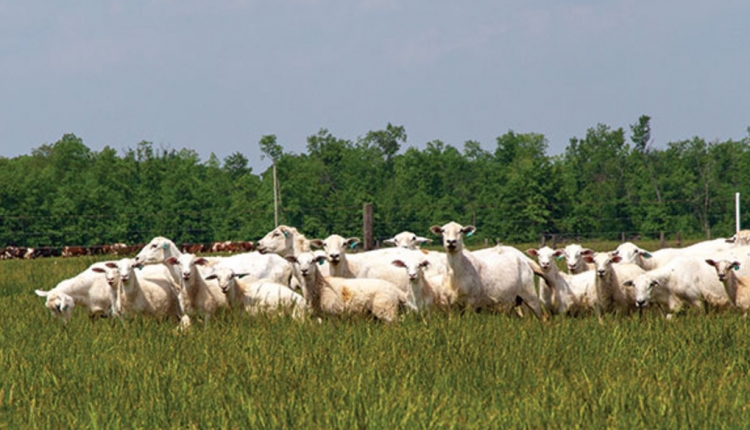The author is a rancher, author, speaker, and consultant with over 40 years of experience in grazing management research, outreach, and practice. He has lived and grazed livestock in hot, humid Missouri and cold, dry Idaho.

Many livestock farms and ranches have different classes of livestock on pasture at the same time of year. Separating stock classes on the basis of their nutrient requirements makes sense. For example, a conception-to-consumer beef operation may have cow-calf pairs, replacement heifers, growing stockers, and finishing animals. These different herds all have unique nutrient requirements for optimal performance.
We generally think in terms of finishing animals or dairy stock as having very high energy requirements. Growing yearlings and early lactation females have high energy requirements. Late lactation and replacement females have moderate energy requirements. Adult dry, pregnant animals at maintenance have low energy requirements to slower rate of gain.
This differing nutrient demand often results in running multiple herds and/or flocks in separate pastures. There are two basic ways we can approach managing pastures to accommodate these various nutrient requirements.
The most common strategy is to identify a pasture as a cow-calf pasture, another pasture as a stocker pasture, and that other pasture as the finishing pasture. This approach results in a pasture being grazed by the same class of livestock at the same time of year.
The most common problem I see with this approach is on pastures being managed for high-quality finishing feed during every grazing cycle. The need for high-quality feed very often comes down to returning to a pasture with inadequate recovery and, subsequently, degrading a stand with the need to reseed every few years. This can be hard on the land and your bank account.
An alternative strategy is to look at every pasture as a flexible opportunity. If we think about individual plants within a pasture and how nutritive value is distributed through the plant, we generally find there is a bite of finishing quality feed, a bite of growing quality feed, and some maintenance feed. Newer growth is generally higher in energy, protein, and bioavailable minerals. More mature forage is lower in both energy and protein. Minerals that become bound in lignin or indigestible fiber are less available.
A better approach
If within our pasture we have a diversity of plant species with varying stages of maturity, on any given day, we have some species that are more suited for finishing feed, while other species may be better suited for growing stockers or cow-calf pairs. When we put together our understanding of nutrient distribution within individual plants and across the mixed sward, it is easy to see that every pasture contains a variety of grazing opportunities.
This is where sequential grazing of different classes of livestock across a single pasture comes into play. These sequential strategies have been described as leader-follower or top and bottom grazing methods. The key component is that one class of animals with higher nutrient requirements grazes the upper part of the pasture canopy, while the lower plant parts are grazed by a different class of animals.
I have personally done this over many years with several different sequences of both cattle and sheep. During the active growing season, finishing animals might be asked to only graze 10% to 20% of the available forage, while growing stock or cows may take another 30% to 40% of the forage.
When we were on our farm in Missouri and had both cattle and sheep, we would graze our stockpiled pastures with weaned calves first, followed by dry cows, and finally ewes that were being bred. While it may seem like breeding ewes would have a higher nutrient requirement than dry cows, we found the ewes would pick high-quality forage left around cattle manure as well as forb leaves cured on the stalk that cattle could not nip off the way a sheep could.
Think water and fence
The key to making sequential grazing work is to have multiple stock water points and fences that will effectively keep the different stock classes in their appropriate pasture. The more frequently you move stock to fresh pasture, the better the system works. We have been doing daily rotations as our normal management since 1988. Daily moves dictate we need to have water available in every pasture. This easily accommodates having multiple herds grazing right next door to one another.
The next piece is effective electric fence to keep the herds or flocks separate. With cattle trained to electric fence, this is no problem at all. We have often kept stockers next to cows with only a single polywire for separation. Most of our permanent fence is two-strand, electrified high-tensile, as we currently have a cattle-only operation. When we ran both cattle and sheep, we used three-strand high-tensile fences.
Leader-follower is a powerful management tool for optimizing grazing when you have mixed pastures and more than one livestock enterprise. Proper fence and water infrastructure is key to being successful.
This article appeared in the November 2021 issue of Hay & Forage Grower on page 16.
Not a subscriber? Click to get the print magazine.

